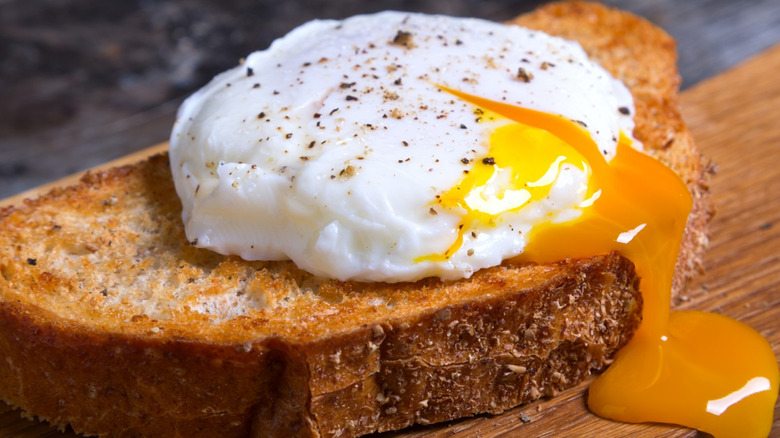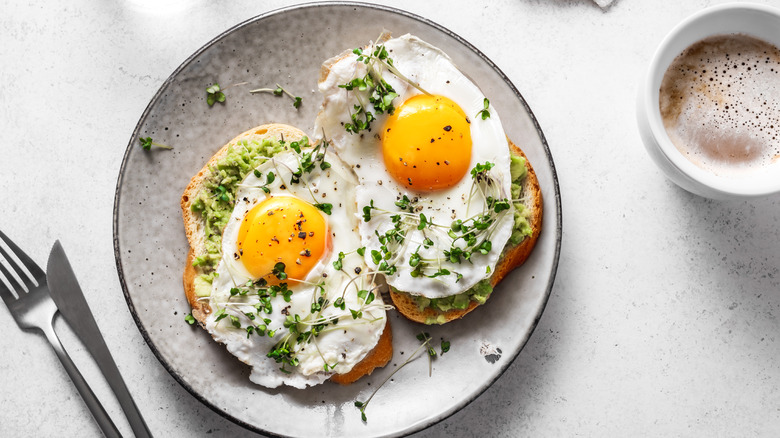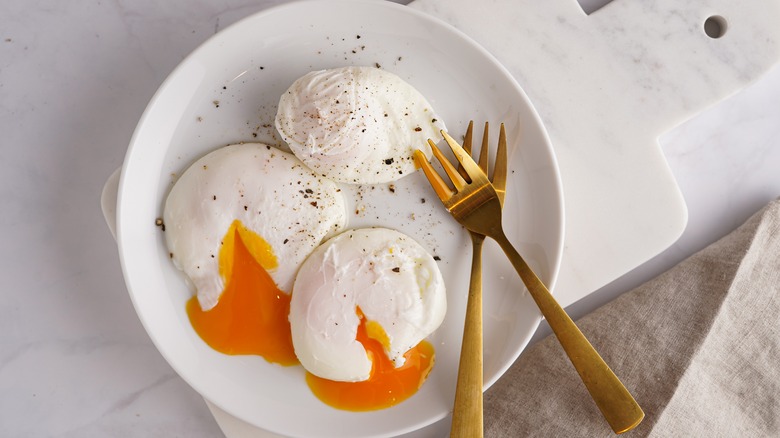The Difference Between Basted And Poached Eggs
When it comes to cooking eggs, the possibilities are endless. From scrambled and fried to omelets and frittatas, eggs are a versatile ingredient that can be transformed into various mouthwatering dishes. But today, we're cracking the code on two specific egg-citing techniques.
Basting and poaching are two popular techniques that elevate eggs to new heights, showcasing their natural flavors and textures in unique ways. While both methods produce delicious outcomes, the main differences lie in the preparation, appearance, and texture, giving rise to distinct culinary experiences. The basting technique also contributes to a delicate and slightly nutty brown exterior, which enhances the overall taste experience. The contrast between the velvety yolk and the gently cooked whites makes basted eggs a visually enticing and delectable option. Poached eggs, however, are renowned for their elegant appearance and delicate texture. With their divine combination of textures, poached eggs are highly coveted in dishes such as Eggs Benedict and other culinary delights that celebrate their luxurious nature.
Understanding the nuances of these techniques will expand your culinary repertoire and allow you to create exceptional breakfast dishes that will impress family and friends. So, grab your apron and get ready to explore the delightful differences between these two types of eggs.
Basted eggs
Basting eggs involves cooking in a skillet with a drizzle of fat, typically butter or oil. This method brings out the flavors of the fat and adds a delightful richness to the eggs. To prepare basted eggs, carefully crack the eggs one at a time into the skillet, ensuring not to break the yolks. Keep some distance between the eggs to allow for easy basting. Once the eggs are in the skillet, immediately begin spooning the hot fat over the eggs. This basting process ensures that the whites cook evenly, forming a thin, partially cooked layer on top while leaving the yolk delightful. They also have an appealing sunny-side-up appearance.
Sprinkle a pinch of salt and pepper over the eggs to enhance their flavor. Adjust the heat as needed to maintain a gentle sizzle. Continue basting the eggs for about 2-3 minutes, or until the whites are fully cooked and the yolks remain runny. For a more well-done yolk, cook for an additional minute or two.
Poached eggs
Poaching eggs involves gently cooking them in simmering water, usually with a splash of vinegar to aid in coagulation. This technique requires precision to achieve perfectly cooked eggs. To poach an egg, crack it into a bowl or cup, then carefully slide it into the simmering water. The gentle heat of the water allows the egg to cook slowly and evenly, resulting in a well-set white and a yolk that remains a vibrant, liquid gold, inviting you to savor its rich and creamy goodness.
To help the egg whites wrap around the yolks for a neater appearance, you can gently stir the simmering water in a circular motion to create a whirlpool effect. Aim to drop the egg as close to the water's surface as possible to prevent it from sinking too quickly. Allow the eggs to poach undisturbed for about 3-4 minutes for a runny yolk. Adjust the cooking time based on your preference. For firmer yolks, cook for an additional minute or two. Using a slotted spoon, gently lift the poached eggs from the water, allowing any excess water to drain back into the pan. Pat them dry with a paper towel if desired and serve immediately.


